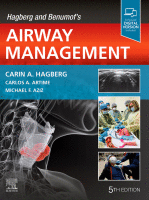Physical Address
304 North Cardinal St.
Dorchester Center, MA 02124

Key Points Mass casualty events and the practice of anesthesia in austere environments are situations for which anesthesiologists should be prepared. Proper triage techniques can help prevent misallocation of resources and also can help alleviate psychic trauma on healthcare professionals.…

Key Points Cardiac arrest is a leading cause of mortality. Current AHA Guidelines recommend chest compressions before initial airway management. Ventilation and oxygenation during CPR can be performed via bag mask ventilation or an advanced airway device (either an endotracheal…

Key Points Noninvasive ventilation (NIV) is widely used in the prehospital setting and may be considered in patients with altered mental status when closely attended. Supine patients undergoing medication-facilitated airway management (MFAM) should be moved off the ground (e.g., to…

Key Points Clinical signs to determine proper endotracheal tube (ETT) placement and positioning have limitations. Secondary confirmatory methods must be used in routine and emergent settings to minimize the chances of ETT misplacement or improper ETT depth. Exhaled CO 2…

Key Points For anatomic reasons, emergency surgical airway in the hands of advanced airway managers will usually be a cricothyrotomy. The critical step in cricothyrotomy is recognizing when it is required. Decision-making should not be left solely to the airway…

Key Points Clinicians should quickly recognize severe airway obstruction and hypoxia to allow fast intervention, which should include a rapid progression to emergency invasive airway access as opposed to multiple attempts to intubate the trachea. Proper identification of airway anatomy…

Key Points Open communication between the surgeon and the anesthesiologist is of the highest importance during rigid bronchoscopy. Inspect the equipment before the procedure; ensure that the bronchoscopes, light sources, light carriers, and connectors are all in working order. Check…

Key Points Lung isolation should only be performed by well-trained and experienced practitioners who understand the significant risks and benefits of such techniques. Indications for lung isolation include protection of the healthy lung from contamination in the case of infection…

Key Points Combining airway techniques takes advantage of the respective strengths of each device while minimizing their specific shortcomings when used alone. The multimodal approach is appropriate in the use of various airway devices, including oxygenation tools. The multimodal approach…

Key Points A proactive low threshold for FIS (Flexible Intubation Scopes) use is important when considering a DA. Rigid VAL, Optical Laryngoscopes, or stylet use when FISs are indicated can worsen already grim situations and impede FIS rescue. FIS instruments…